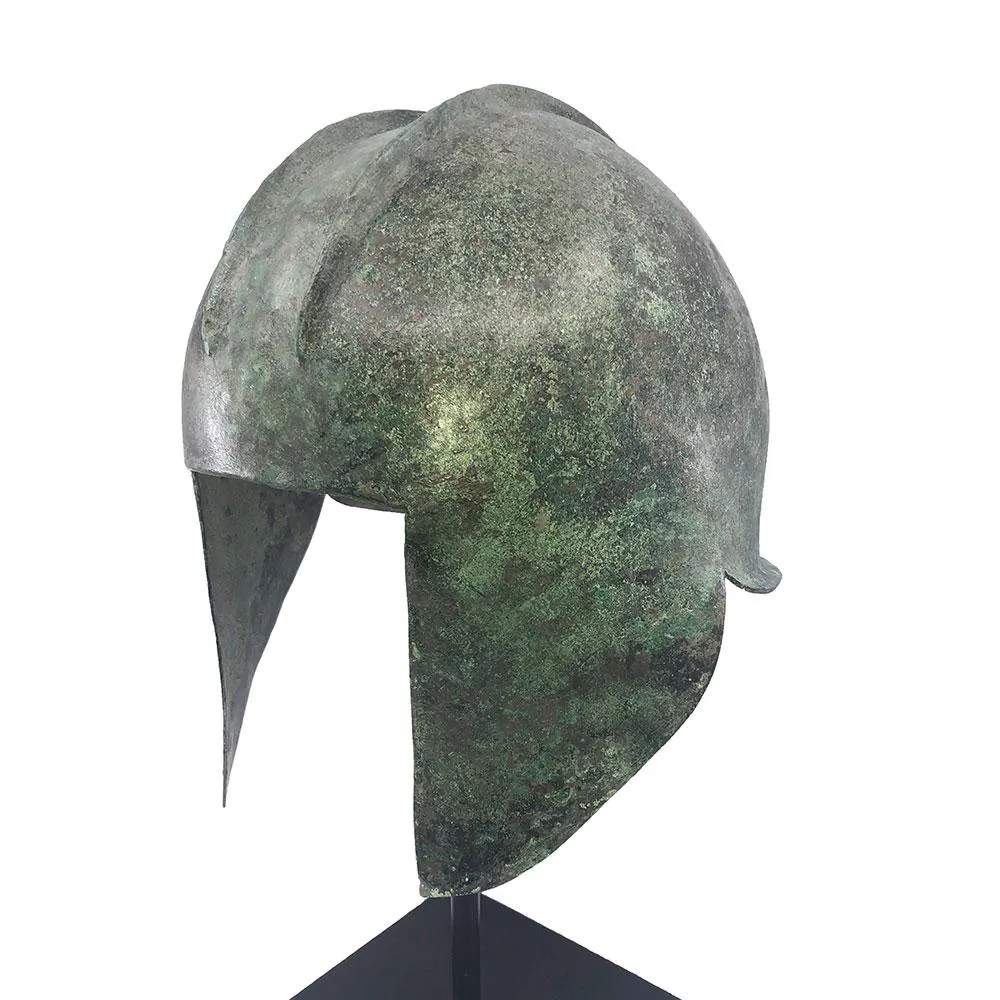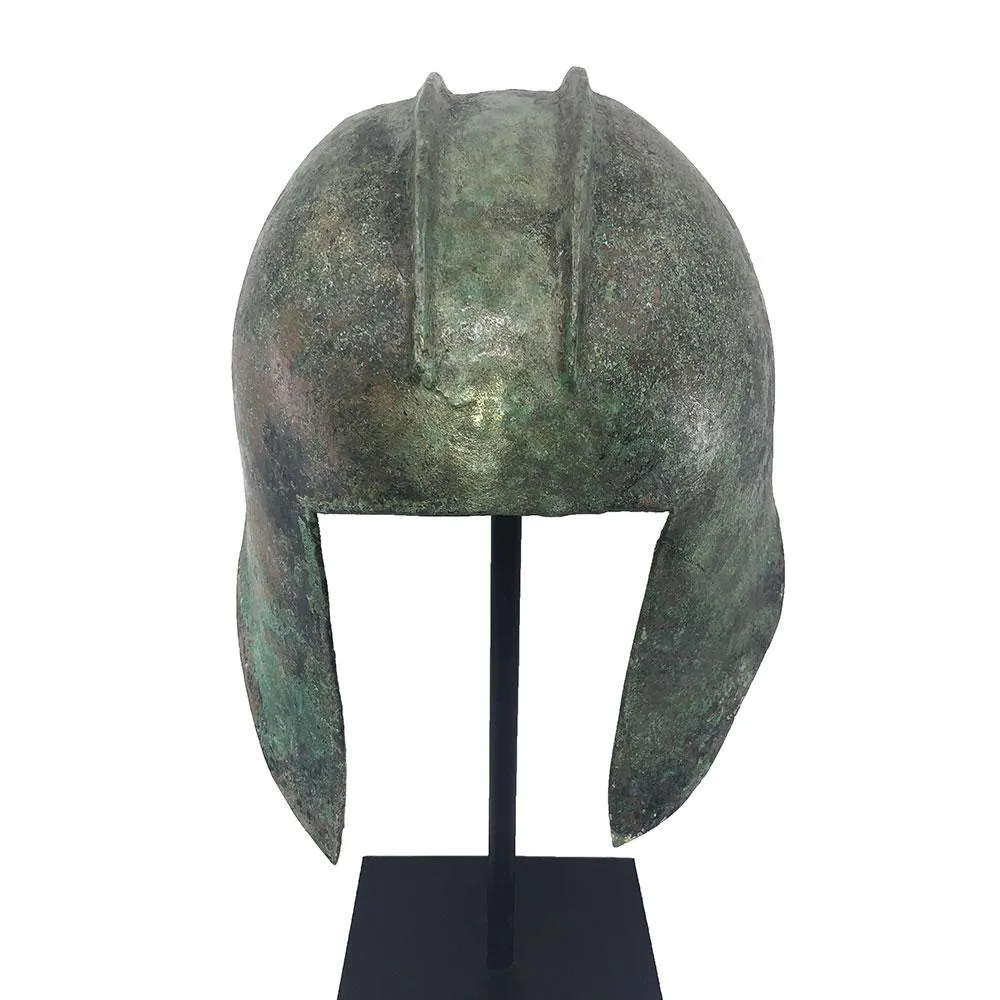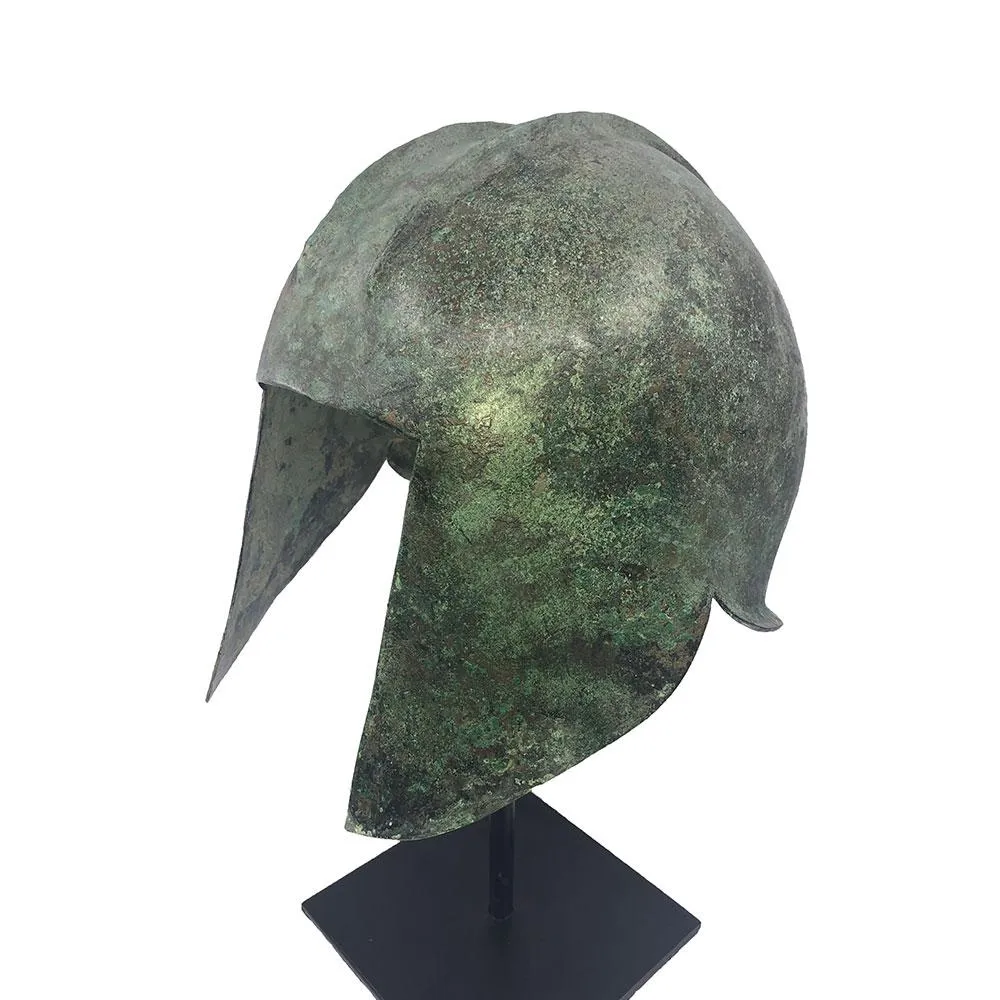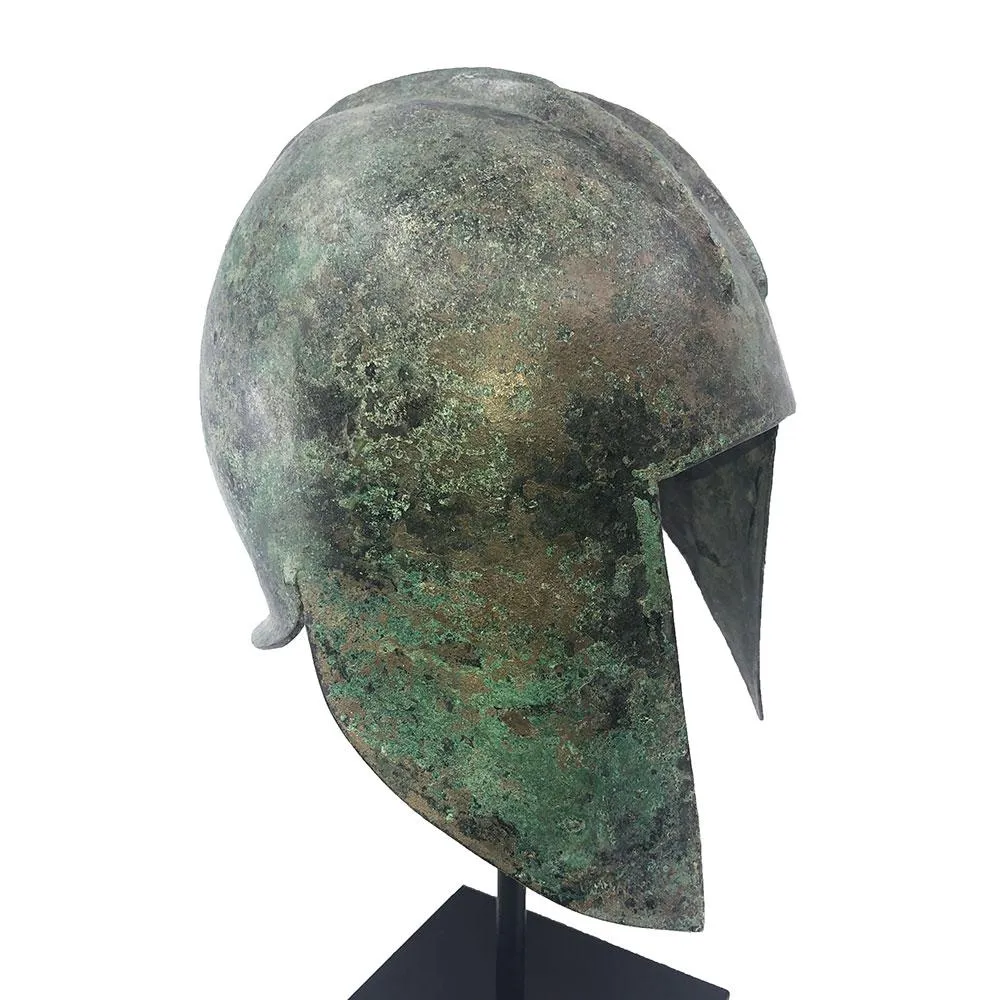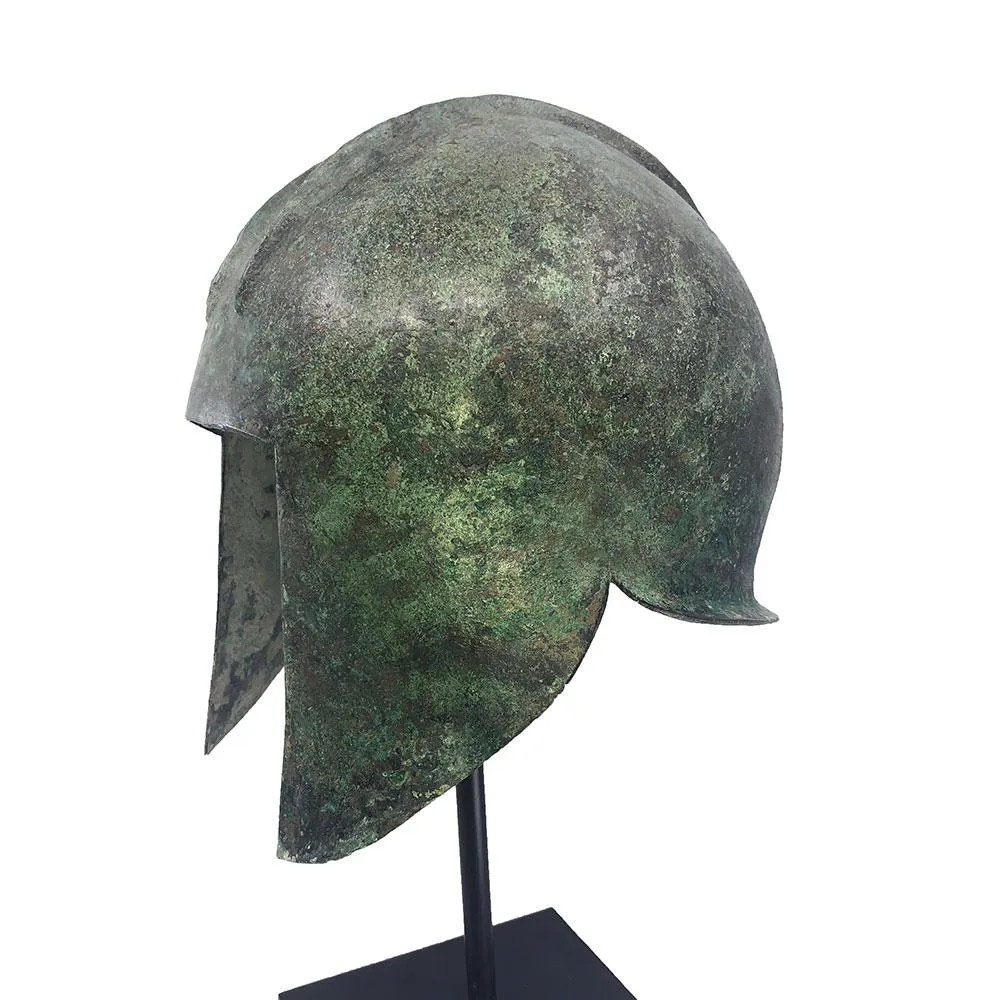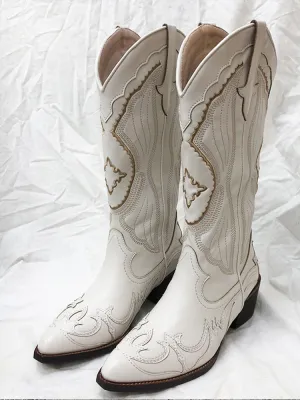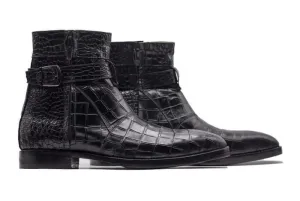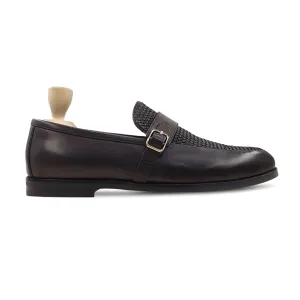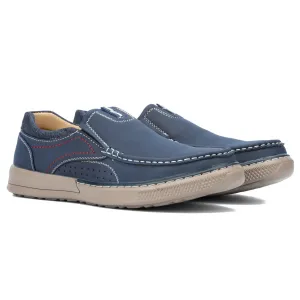Hammered from a single sheet, of domed form, with a straight visor and a short flaring neck-guard, two raised parallel ridges running front to back across the crown.
In the 8th century BCE, two new helmets emerged. They were made entirely of bronze and were products of advanced forging techniques. Their sudden appearance and widespread adoption is often attributed to the dominant form of combat in the 8th century. This dramatic style of violence involved crowds of heavily armored men ramming into each other. At some point, both sides would have a massive pushing contest all the while trying to stab the enemy with spear or sword. Though the details of Greek battle are heatedly debated, scholars agree that the Ancient Greek warrior was protected from head to foot except at their face, throat, and lower thigh.
The first helmet was named the Illyrian Helmet by later scholars because of its popularity amongst the Macedonians and non-Greek Illyrians. However, the name is misleading as the Illyrian Helmet was originally developed in the Peloponnese and quickly became popular throughout Greece. Similar in shape to earlier Bronze Age helmets, the Illyrian Helmet covered the entire head, cheeks, and even part of the throat. Although, the face was left open and the helmet was forged in two pieces which were soldered together along its peak.
Because the Illyrian helmet was forged from two pieces, it was especially weak along the seam. The horsehair crest, which was already a psychological and stylistic asset, attempted to address the issue. When the crest ran from back to front it conveniently concealed and strengthened the crease atop the Illyrian Helmet. This style of crest quickly became a popular necessity, and for several centuries Greek crests almost exclusively ran from front to back (Everson 76).
The Illyrian Helmet had many weaknesses. The open face failed to address the dangers of intense close combat. Additionally, the forceful collisions involved in early Greek warfare made the structural weaknesses of the Illyrian Helmet a liability. The helmet was phased out and ultimately disappeared from Greece by the 5th century BC (Everson 130). Interestingly, the Illyrian Helmet became a favorite of the Macedonians and Illyrians. These northern communities utilized light infantry, loose formations, and cavalry which all required the visibility of an open faced helmet.
Reference: Jesse Obert, "A Brief History of Greek Helmets", AncientPlanet Online Journal Vol. 2 (2012), 48 – 59.
Dimensions: Height: 25 cm (9.8 inches)
Condition: Good blue-green surface patina with areas of earthen deposits. Professionally stabilized with break lines, losses and cracks typical with this type of helmet restored, otherwise complete and in very good condition overall. Custom mounted.
Provenance: Private NJ collection, acquired from the NY trade in 1980s, thereafter private German collection.

 Cart(
Cart(